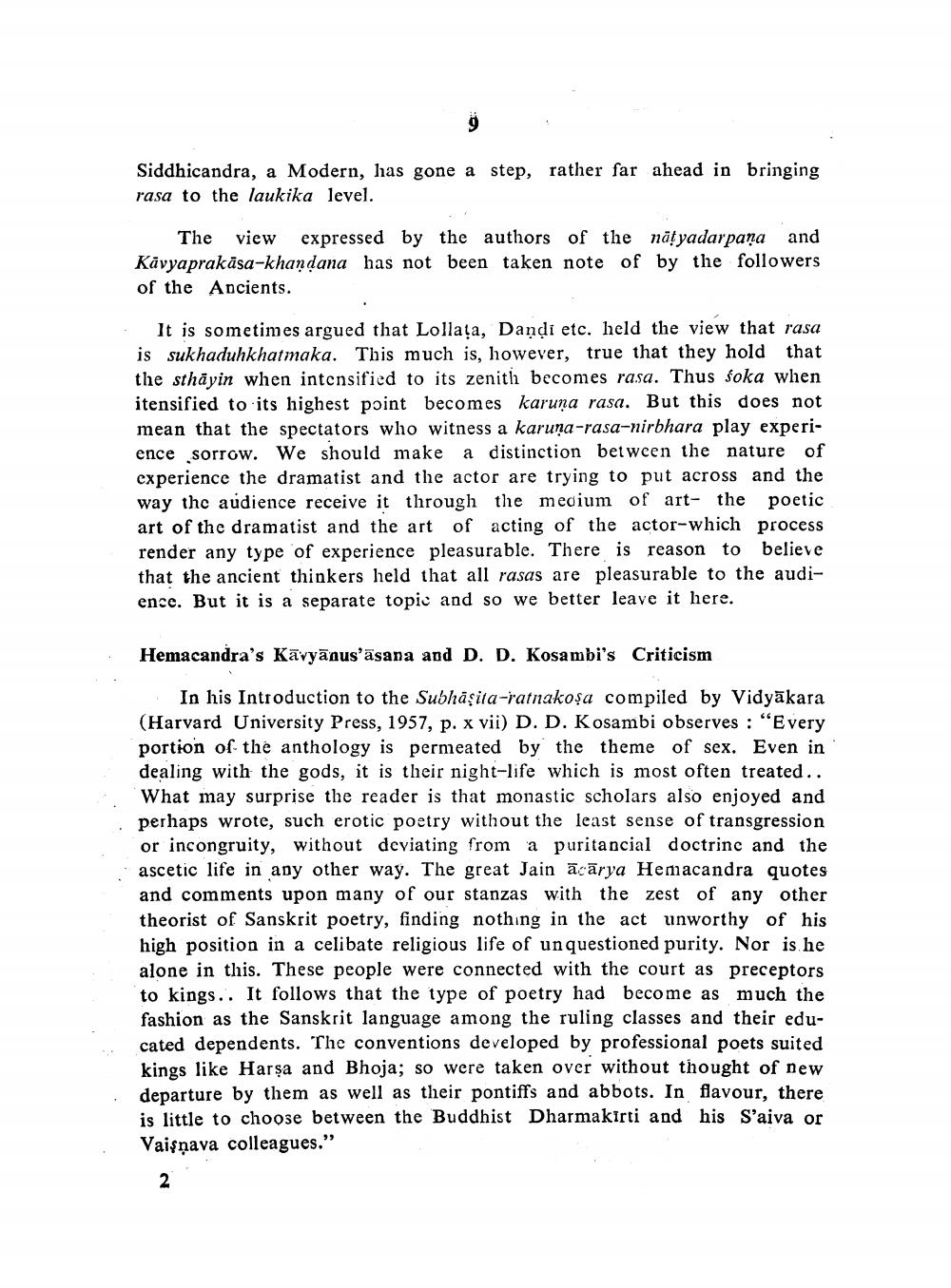________________
Siddhicandra, a Modern, has gone a step, rather far ahead in bringing rasa to the laukika level.
The view expressed by the authors of the nātyadarpaņa and Kavyaprakasa-khandana has not been taken note of by the followers of the Ancients.
It is sometimes argued that Lollata, Dandi etc. held the view that rasa is sukhaduhkhatmaka. This much is, however, true that they hold that the sthāyin when intensified to its zenith becomes rasa. Thus soka when itensified to its highest point becomes karuna rasa. But this does not mean that the spectators who witness a karuna-rasa-nirbhara play experience sorrow. We should make a distinction between the nature of experience the dramatist and the actor are trying to put across and the way the audience receive it through the medium of art- the poetic art of the dramatist and the art of acting of the actor-which process render any type of experience pleasurable. There is reason to believe that the ancient thinkers held that all rasas are pleasurable to the audience. But it is a separate topic and so we better leave it here.
Hemacandra's Kāvyānus'āsana and D. D. Kosambi's Criticism
In his Introduction to the Subhāşita-ratnakoşa compiled by Vidyākara (Harvard University Press, 1957, p. x vii) D. D. Kosambi observes : "Every portion of the anthology is permeated by the theme of sex. Even in dealing with the gods, it is their night-life which is most often treated.. What may surprise the reader is that monastic scholars also enjoyed and perhaps wrote, such erotic poetry without the least sense of transgression or incongruity, without deviating from a puritancial doctrine and the ascetic life in any other way. The great Jain ācārya Hemacandra quotes and comments upon many of our stanzas with the zest of any other theorist of Sanskrit poetry, finding nothing in the act unworthy of his high position in a celibate religious life of unquestioned purity. Nor is he alone in this. These people were connected with the court as preceptors to kings. . It follows that the type of poetry had become as much the fashion as the Sanskrit language among the ruling classes and their educated dependents. The conventions developed by professional poets suited kings like Harșa and Bhoja; so were taken over without thought of new departure by them as well as their pontiffs and abbots. In flavour, there is little to choose between the Buddhist Dharmakirti and his S'aiva or Vaişņava colleagues."




